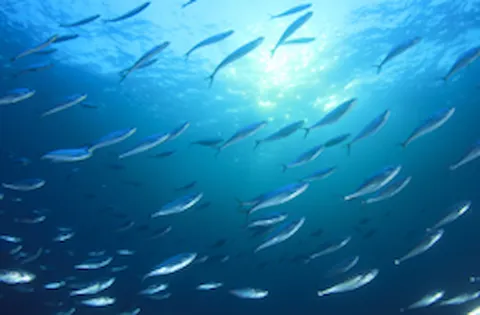Offshore aquaculture
Aquaculture is moving further offshore, and technology is evolving rapidly to produce fish at a scale and in locations never seen before. DNV can help your operations grow in a safe, sustainable way.
Aquaculture is the fastest growing food producing sector. To meet the increasing demand of fish, and to overcome challenges related to disease and environmental burden, the production is expected to move more and more offshore. Therefore, a cross-industry approach is needed to ensure that offshore aquaculture is safe, sustainable, and commercially viable, and to establish trust in the fish and seafood supplied. To enable the move to offshore, DNV can offer knowledge gained through decades of experience in shipping and offshore energy sectors.
The move to offshore aquaculture
Aquaculture production is forecasted to grow to between 102-105 million tonnes by 2027, according to OECD and FAO outlooks. To keep up with demand, one solution is to move offshore, as suitable new locations for inshore production become scarce. Good water quality, steady ocean currents, and low variance in temperature gives optimal growing conditions, reduces the probability of diseases and parasite infestations and improves fish health. The result is an attractive, premium-class fish product which helps meet the demand for quality as well as quantity.
DNV will help you to overcome the challenges
The global aquaculture industry is set to continue its strong growth into the next decade, but it must respond to the challenges of spatial limitations, environmental burdens and fish disease. Farming in exposed areas offers solutions to these challenges, but developments are needed in several areas to realize the potential. Technical solutions are being developed to move fish farms offshore to more exposed areas with harsher environmental conditions. Offshore fish farming units must be designed to perform these tasks with increased wave height, stronger currents, interaction with larger vessels, and more complex logistics. Units will be larger, with higher capital expenditure than conventional fish farms and efficiency must be improved to enable lower operational costs and ensure attractive ROI for investors. Regulations for the design of these structures are partly inadequate. DNV plays a key role, being the quality assurance company with the most experience gained across the offshore fish farming field. Our task is to help designers and owners comply with the relevant rules and regulations to secure the safety of life, property and the environment.
Beyond zoning considerations, public regulations also include requirements which address concerns such as environmental issues, work safety, fish welfare, and production volumes. DNV shares the common goal of working together to utilize marine resources responsibly and effectively in order to ensure sustainable food production for the future.
DNV has the experience to support offshore aquaculture projects
You will benefit from our extensive experience with inshore and onshore fish farming projects, assurance of offshore constructions and operations, risk management of marine and offshore units and sustainable programmes for fish and fish well-being.

DNV Rules: Offshore fish farming units and installations
DNV rules for classification contain procedural and technical requirements related to obtaining and retaining a class certificate. The rules represent all requirements adopted by the Society as basis for classification.

OCEAN FARM 1 receives first ever offshore fish farming class certificate from DNV
Owned and operated by SalMar, Ocean Farm 1 is the first salmon farm designed and built for exposed operation, with a novel design that combines solutions from aquaculture and the offshore industry.

Havfarm
Ordered by the Norwegian company Nordlaks, the 385-metre-long ship-shaped Jostein Albert Havfarm is a revolutionary salmon farm which was built to hold 10,000 tonnes of fish in six 47 x 47-metre nets.